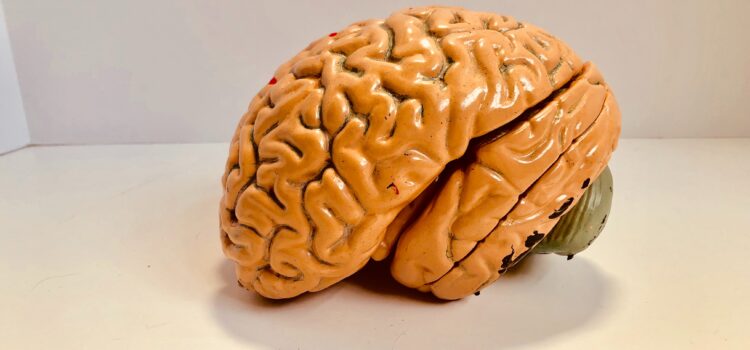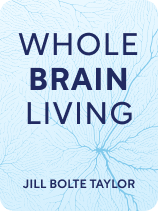

This article is an excerpt from the Shortform book guide to "Whole Brain Living" by Jill Bolte Taylor. Shortform has the world's best summaries and analyses of books you should be reading.
Like this article? Sign up for a free trial here.
What does the cerebral cortex do? What’s the difference between the cerebral cortex’s functions on the left side and the right side of the brain?
Jill Bolte Taylor’s book Whole Brain Living describes four characters that help the brain function. Two of these characters (Characters 1 and 4) make up the cerebral cortex.
Discover more about the functions of the cerebral cortex and how it forms your thought processes.
Left-Side Cerebral Cortex—Structured Thinking
What does the cerebral cortex do? According to Taylor, the cerebral cortex on the left side of the brain values practicality the most and is highly attuned to your ego—your sense of being an individual. Character 1 focuses on differences (between physical objects and people) and excels at defining boundaries and establishing routines. This character uses their rational and ordered thinking to analyze, organize, and formulate plans. On the other hand, Taylor says that Character 1’s structured thinking can be too rigid, and it’s also the part of us that judges ourselves and others harshly, makes unhealthy comparisons between people, and is only satisfied by external forms of affirmation such as wealth and social status.
| Character 1’s Personality Profile Is Linked to Taylor’s Healing Journey Although some research aligns with Taylor’s description of Character 1, other aspects of her Character 1 profile are likely based on her personal journey of primarily inhabiting her right hemisphere post-stroke and slowly regaining her left hemisphere functions. For example, research supports the idea that the cerebral cortex as a whole supports higher-level thinking and reasoning skills. It’s associated with a wide range of brain functions, including memory, problem-solving, reasoning, sensory processing, and motor skills. However, research on how the brain distinguishes borders between objects doesn’t differentiate between the roles of the left and right hemispheres. This observation about Character 1 may stem from Taylor’s experience—described in My Stroke of Insight—of losing all sense of her body’s physical boundaries when she experienced the stroke in her left hemisphere. Likewise, it’s difficult to identify evidence linking the left hemisphere cerebral cortex with the judgmental and extrinsically motivated personality type that Taylor describes. This analysis may have been influenced by her experience of losing her judgmental tendencies in the aftermath of her stroke.) |
Here’s how Taylor describes Character 1 in different contexts:
Taking care of your body: Character 1 tends to treat the body like a valuable tool needed to get things done. Because of this, Character 1 optimizes the body’s health through regular check-ups, pays close attention to detail when it comes to diet and exercise, and tends to manage illness by learning as much as possible about it and taking appropriate action.
(Shortform note: Taylor implies that Character 1 takes meticulous care of the body because the higher-level thinking in the cerebral cortex makes Character 1 detail-oriented and able to think through the cause and effect of your actions. For example, Character 1 might reason “If I eat a salad instead of junk food now, I’ll probably feel better later on.”)
Workplace: Character 1 tends to take on a leadership role in the workplace in one of two ways—what Taylor refers to as a “Hard 1” or a “Soft 1.” Hard 1s are so determined to get things done efficiently that they can be overly critical of their colleagues and themselves. They like to do things their own way and aren’t receptive to feedback. On the other hand, Soft 1s are supportive and good at organizing their team members, set clear expectations, and strive for improvement.
(Shortform note: We can infer that Hard 1s might result from being hyperfocused on creating order and executing plans—skills that are often associated with the frontal lobe of the cerebral cortex. In The Leadership Challenge, James M. Kouzes and Barry Z. Posner say good leaders exhibit certain traits, and these traits align with those found in Soft 1s. Good leaders must empower others by fostering a relationship of collaboration and trust, and they must show that they genuinely care about their team members. Kouzes and Posner argue that these characteristics, along with setting an example, inspiring others, and challenging the status quo, help you become a leader that others want to work with.)
Romance: Taylor claims that in relationships, Character 1 is very concerned with establishing labels (for example, “Are we in a committed relationship or dating casually?”) and the timeline for relationship milestones such as marriage, as well as maintaining a predictable dynamic between partners.
(Shortform note: Taylor implies that this tendency is linked to Character 1’s penchant for boundaries and order. In Attached, Amir Levine and Rachel Heller claim that regardless of what kind of labels and timeline you prefer, the key to a thriving relationship is being able to clearly and honestly communicate those needs. This is what Levine and Heller refer to as communicating like a “secure attacher.” For example, if your Character 1 wants reassurance about where a relationship is heading, be assertive about what you want and clearly ask your partner about what their goals are as well.)
Right-Side Cerebral Cortex—Expansive Thinking
Taylor explains that the cerebral cortex on the right side of the brain exhibits an expansive and fluid style of thinking that’s focused on the present moment. She says that one way of understanding Character 4 is by imagining our mindset when we first entered the world: We didn’t have language, memories, or a sense of self. We also entered the world aware that we’re made up of the same energy that flows through everything else in the universe—a cosmic consciousness that transcends words, rationalization, or scientific understanding. Unlike Character 1, who thinks in terms of language and focuses on boundaries, Character 4 thinks in pictures and recognizes that everything’s connected.
Taylor strengthened her connection to Character 4 after her stroke, and while she acknowledges that there’s no easy way to access Character 4, she recommends focusing intently on the experience of the current moment and then channeling all of your mental energy into gratitude.
| Accessing the Non-Dualist Character 4 Mindset Many spiritual leaders describe the Character 4 mindset using the term “non-duality,” or the idea that the universe isn’t made up of individual entities but rather one indivisible whole. Various spiritual traditions, including Hinduism and Buddhism, refer to the non-dualist perspective as the key to well-being and happiness. Like Taylor, many writers on this topic assert that non-dualism is a transcendental experience that’s impossible to describe with words. Nonetheless, in The Book, Alan Watts describes the non-dualist philosophy by saying that there aren’t really individual people—rather, each person is a different manifestation of one single Cosmic Being. He says that by recognizing their oneness with the universe, Westerners can end their chronic feelings of dissatisfaction and alienation. So how exactly can you achieve a Character 4 mindset? Similar to Taylor’s advice, some people recommend meditation as a way to tap into this kind of expansive thinking. In addition, some people who’ve taken psychedelic drugs have reported a transcendental experience of connectedness that aligns closely with Taylor’s description of Character 4. |
Taking care of your body: Character 4 considers the body sacred. Taylor says that because of this, Character 4 embraces holistic care (including eating well, doing physical activity, and engaging in spiritual practices). She says that Character 4 holds fast to gratitude even during periods of illness.
(Shortform note: Character 4 would likely opt for holistic care of the body because they understand the connections between everything—how exercise and mental health might be linked, for example. Research supports the idea that exercising has a positive impact on people’s mood, motivation, and self-esteem. In addition, because Character 4 perceives everything as part of the same cosmic energy, they would naturally tend toward gratitude rather than dwelling on what’s missing at the individual level. For example, if everyone is part of one cosmic consciousness, there’s no reason to be envious of someone else’s good health, since there isn’t truly an “else.”)
Workplace: At work, Character 4 excels at visualizing how multiple moving parts fit into the big picture. For example, they might do a great job of putting together a team with complementary skills and coordinating different departments as they work toward a larger goal. Taylor explains that they don’t get bogged down by details or setbacks, and they’re motivated to make the world a better place rather than accumulate material goods.
(Shortform note: Taylor implies that these professional strengths result from Character 4’s big-picture style of thinking, which she says is characteristic of the right hemisphere. Character 4’s altruistic motivation in this context is likely linked to their sense of connectedness with the rest of the universe, which would foster a more compassionate mindset. In Drive, Daniel H. Pink argues that all people are naturally wired to want to help others and seek a meaningful purpose for their work that goes beyond material gain. This argument is consistent with Taylor’s assertion that everyone has a Character 4 they can channel if they’re intentional about it.)
Romance: Taylor says that in romantic partnerships, Character 4 is the sense of groundedness that comes from within rather than from the other person. Because they naturally focus on the positive in life, Character 4 is great at connecting with others. Taylor also clarifies that although Character 4 is an optimist at heart, they’ll only stay in a relationship long term if the other person is truly present with them and brings positive energy to the dynamic.
(Shortform note: In Attached, Levine and Heller claim that ending a romantic relationship is difficult because the emotion-driven part of our brain (the limbic system, according to Taylor) registers a potential breakup as a source of pain that it instinctively wants to avoid—like touching a hot stove. This might explain why Character 4, who dwells in the higher-thinking zone of the cerebral cortex, is good at making decisions about relationships based on what’s best for you in the long term.)

———End of Preview———
Like what you just read? Read the rest of the world's best book summary and analysis of Jill Bolte Taylor's "Whole Brain Living" at Shortform.
Here's what you'll find in our full Whole Brain Living summary:
- How you can choose to access different parts of your brain
- The four areas of the brain that perceive and navigate the world differently
- How to achieve emotional well-being by getting to know our brains better






